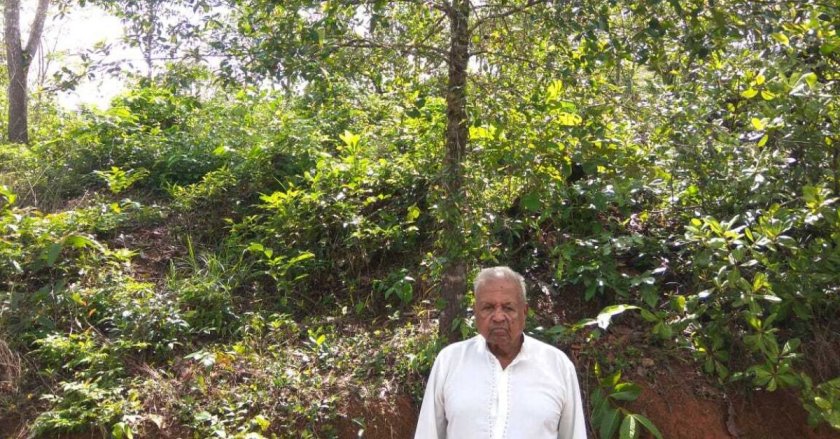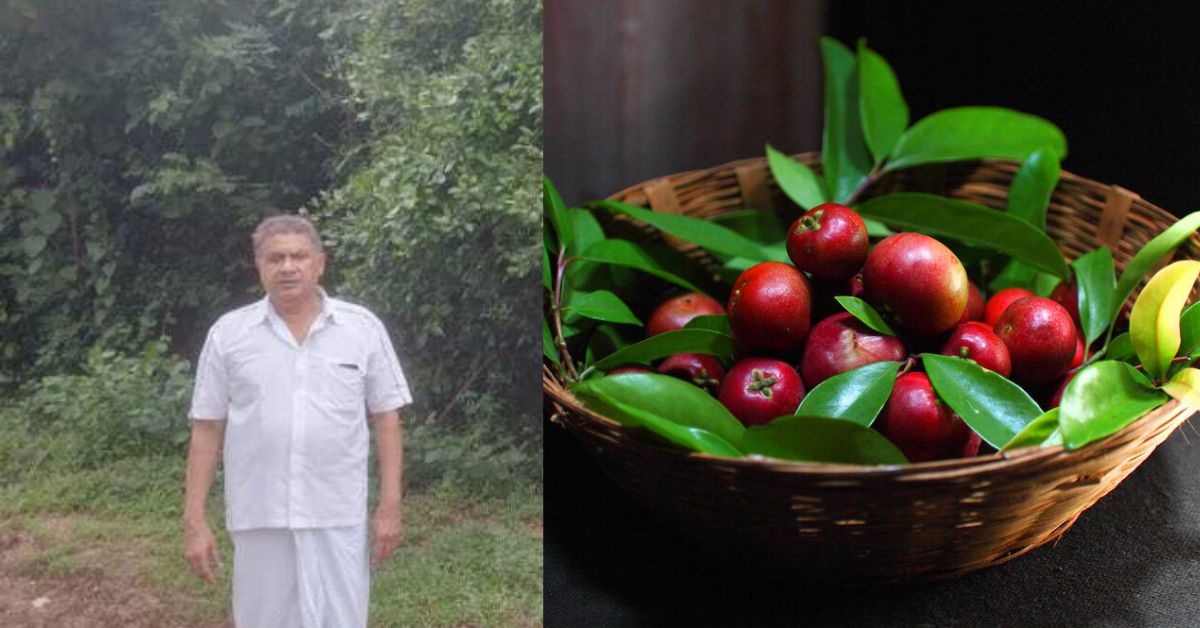Kokum, a rare and cherished sour-tasting fruit, frequently features in the cuisine of people living in the Western Ghats region of India. Despite its popularity, this savoury fruit is becoming increasingly scarce due to the decline in its plantations.
“Most of it only grew wild without any proper care or irrigation. They were almost going extinct when my father started to grow them on our plantation,” says Ramesh Rai (68), the son of Narayana Rai — a farmer from Ballikan village in Puttur, who was one of the first people who realised the decline in the production of kokum and started planting the fruit.
Known scientifically as Garcinia indica, kokum is a fruit-bearing plant in the mangosteen family. It is commonly found in the Western Ghats region of India. Devoured for its savoury taste, it is also known as bheranda in Marathi, kudampuli in Malayalam, and kodampuli in Tamil.
Although Narayana passed away earlier this year, his family, especially his son, has been carrying forward his legacy. Narayana’s estate, now managed by his son, boasts over 10,000 blooming kokum trees that are actively producing fruit.
The Better India sat down with Ramesh to understand his father’s vision and what Ramesh is doing to take it forward.
A leap of faith
Ramesh fondly recalls when his father predicted that kokum would be in high demand in the future. Talking about the history of the estate and his father’s dream, he says, “My father acquired our property in 1950, transforming what was then a dense forest into a plantation. Initially, we planted areca, rubber, coconut, jackfruit, and cashew.”
While Ramesh’s father was farming different plants, it was about 15 years ago that he began planting Kokum, anticipating its future demand due to its medicinal value. “He started growing kokum because of his love for the fruit! Furthermore, kokum plants don’t need much water and grow well in the local climate,” he adds.
He shares that his father planted around 12,000 kokum plants, of which approximately 10,000 have survived. Kokum is highly sought after in North India for its use in making oils and beverages. “We were confident that the price of kokum would rise, and we decided to wait for the plants to mature. Initially, the price was around Rs 10 per kg, but it has now risen to Rs 120 to 130 per kg, and in some places, it can go up to Rs 300 per kg,” he shares.

When Narayan started farming kokum, everyone thought that it was a waste of time. However, for him, this meant the loss of a native tree, which he did not want.
Ramesh adds, “The initial challenges my father faced were significant. Farmers found it hard to believe that a simple plant like kokum could solve their problems. Since kokum was not well-known and had little demand in the market, farmers were reluctant to waste their time growing it.”
Saving the native plant
Ramesh recalls that his father Narayan took it upon himself to raise awareness among the farmers. “We had to demonstrate its effectiveness and partner with various organisations to showcase it. We tried to explain to the farmers how medically beneficial it was. It took around 36 to 60 months for the farmers to see results and recognise its benefits,” Ramesh says.
Once the farmers understood my father’s idea, they wanted to plant kokum too, he adds. “Many were inspired after seeing our plantation and took plants from us. Over the years, we have distributed around 2,00,000 saplings to interested farmers. We charged Rs 5 to 12 per sapling, but we stopped nursery production to prevent oversaturation in the market,” he shares.
While Ramesh worked as a hotelier for most of his life, he is now planning to take his father’s
legacy ahead. “My father was always dedicated to farming, and he started the hotel business too managing it alongside the plantation. The land was ancestral but it was my father who expanded it to 200 sq ft and turned it into a farm estate. We live on the estate, and I want to divide my time between the hotel and the plantation now,” he says.
Sharing his future plans, he says, “By next year, we plan to focus on harvesting and marketing kokum in larger quantities. Labour shortages have limited our capacity, but we are addressing this issue by bringing in more workers. We aim to meet the current high market demand for kokum. This year, we couldn’t harvest much due to labour shortages, but with new labour strategies, we hope to overcome this challenge.”
He adds, “My father made various kokum products, such as head massage oil, body massage oil, and kokum juice. Though we have the equipment and facilities to continue production, we have not actively pursued it since his passing. We have a factory and machinery, but I haven’t continued the production because I am involved in other fields. I wish to revive that one day too.”

Ramesh has also hosted international delegations from around 42 nations for a conference organised by the Central Plantation Research Institute in Kasaragod. “They visited our plantation to observe and learn from our farming practices, especially kokum. Although we don’t regularly host guests at the estate, we have a few rooms in our old house for occasional visitors,” he shares.
The transition to Kokum farming was also a strategic decision rather than just an emotional one, Ramesh informs. “It was to utilise our resources effectively and address water scarcity issues. We planted kokum between other crops like coconut and cashew to maximise land use. The success of our kokum plantation has proven the foresight and planning that my father had, ensuring the sustainability and profitability of our farming practices.”
He adds, “We believe that kokum has significant potential due to its medicinal properties and the growing demand for natural health products. As we continue to develop our plantation and overcome challenges, we remain committed to providing high-quality kokum and contributing to the agricultural landscape in our region.”
(Edited by Pranita Bhat; All Images Credit: Ramesh Rai)
No comments:
Post a Comment